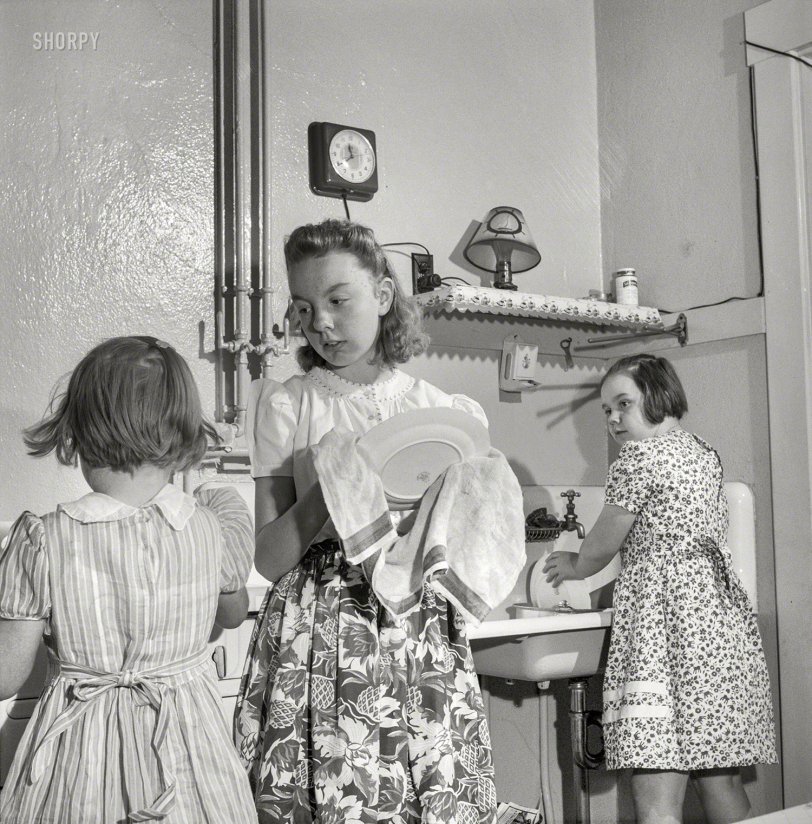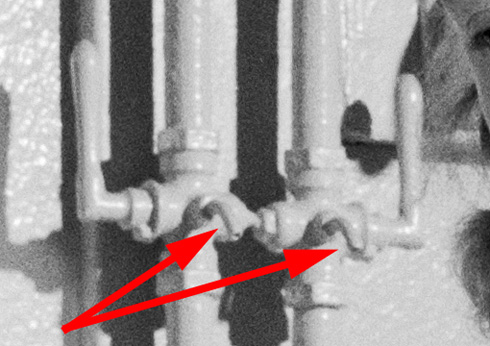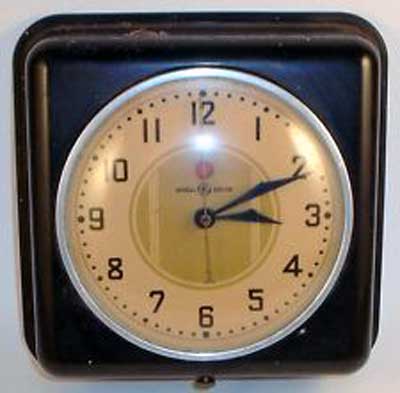


Framed or unframed, desk size to sofa size, printed by us in Arizona and Alabama since 2007. Explore now.
Shorpy is funded by you. Patreon contributors get an ad-free experience.
Learn more.

- Exclusive pump
- Details, Details
- What's that building to the left of the tower?
- Coal Barges
- Bromo-Seltzer
- Inner harbor
- The Basin
- What a headache!
- Giant stepladder?
- Baldwin 62303
- Baldwin VO-1000
- Cold
- No expense spared
- Tough Guys
- Lost in Toyland
- And without gloves
- If I were a blindfolded time traveler
- Smoke Consumer Also Cooks
- Oh that stove!
- Possibly still there?
- What?!?
- $100 Reward
- Freeze Frame
- Texas Flyer wanted
- Just a Year Too Soon
- WWII -- Replacing men with women at the railroad crossing.
- Yes, Icing
- You kids drive me nuts!
- NOT An Easy Job
- I wonder
Print Emporium
Wash and Dry: 1943

September 1943. Cincinnati, Ohio. "The children of Bernard Cochran, a Greyhound bus driver, doing dishes after Sunday dinner." Medium format negative by Esther Bubley for the Office of War Information. View full size.
The Mystery of the Pipettes, Solved?
The "pipettes" bear a remarkable resemblance to gas valve handles.
[The question is about these structures. -tterrace]
As Emily Litella used to say, "Oh, that's very different. Never mind." =~)

Telechron Clock
Model 2H08, being 1943 it was probably made in the late 30's and is probably black.
Those clocks just never stop (with some occasional oil), I have two of them running at home and another at work, all pre-war.

Sunday dinner
When I was growing up in Nebraska in the 1960s, "dinner" was the big meal of the day, whenever it happened. Most often in the evening, but on Sundays and holidays like Thanksgiving and Christmas, dinner was the midday meal. On those days, and any time we had something smaller like soup and sandwiches or leftovers, the evening meal was called supper. Sunday dinner was usually something like pot roast with potatoes and carrots, which then provided leftovers to serve on Monday. The advantage of an oven roasted one-pot meal was, if our church service went long for some reason, dinner likely wouldn't be ruined. Sunday suppers at my house were often what Mom called a "cold plate". It consisted of various canned fruit like peaches and pears, vegetables like carrot and celery sticks, maybe scallions or green peppers, cottage cheese and cold salmon dumped out of a can. I did not pass this tradition along to my own children.
At Our House
Sunday "Dinner" was at 1 PM, and was often an extended family gathering. Sunday Supper was "Free Fridge", whenever/whatever leftovers from the week were there when you wanted to eat. Rural PA, mid-60's.
"Pipettes"
I can't positively identify the "pipettes" sticking out of the gas valves, but they could be for connecting portable gas appliances. There were once gas-heated clothes irons, toasters, etc. They had rubber hoses protected with a woven cotton jacket.
Such appliances would be "history" by the time of this photo, as the house has obviously been wired for electricity.
I believe "barb" is the proper name of the fitting on which one attaches a gas hose. I've not seen them called "pipettes."
About condensate drains - the old "coal gas" which preceded modern natural gas had two types of condensate. First, the generation and storage process left the gas saturated with water vapor. Second, the gas contained heavy compounds which would condense into a tarry substance. If you've ever seen an old iron cover marked "Gas Drip" in a street or sidewalk, this is a clean out of a trap designed to trap this tarry substance, which was a saleable product to the gas company.
A condensate drain must be at the lowest point of the piping, so I do not think these are drains.
Either Very Early Or Very Late Dinner
The wall clock indicates the time is 11:40!
[In a lot of places, "dinner" is what you might call lunch. Six hours later, it's time for supper. - Dave]
Better behaved than my brothers and I
These lovely young girls are: Irma Jane (11), Mary (9) and Sue Ann (7).
Mr Cochran's career spanned more than 30 years (1930 - 1960) with Greyhound (and possibly other companies).
BTW, We need a do-over in the 1930 elections. Bernard Cochran was double counted in the 1930 census. First, in Louisville, Jefferson, Kentucky (lodger, occupation Coach Driver, Motor Coach Transportation) and second, his hometown of Rising Sun, Ohio, Indiana (Taxi Driver, Bus Co).
Great Stitching, Pipettes
Very nice stitching on the oldest's collar and button placket.
I'm assuming the piping on the wall is for the gas stove. So, what is the purpose of the "pipettes" on the front of each valve? Looks like tubing could be slipped on...for bunsen burners?
Love the Matchbox Holder
We had one of those in our kitchen. I had forgotten about them until seeing this. The open space on the side was so you could strike the match on the side of the box.
No Aprons?
These girls are washing and drying dishes in their Sunday "best" dresses, which their mom or grandma most likely made at home on the sewing machine (the skill of home sewers in those days was extraordinary). Since the photographer was there, they didn't put on the aprons they usually would have to do such a chore.
According to the clock
These folks had Sunday dinner either really early or really late.
























On Shorpy:
Today’s Top 5